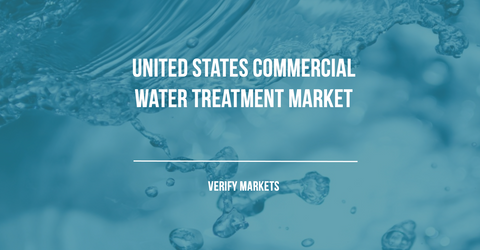2022 UNITED STATES COMMERCIAL WATER TREATMENT MARKET
A comprehensive analysis of the Commercial Water Treatment industry in the United States including market sizing, market share by competitor, market share by end-user, market share by technology, market share by distribution channel, market share by equipment type, POE vs POU split, drivers, restraints, industry quotations, company profiles and market forecasts to 2029. The analysis includes both the commercial water treatment (CWT) modules and total system market.
[Published April 2022]
Companies Featured:
Culligan International, Ecolab Inc., Pentair plc, Evoqua Water Technologies, Corp., Lanxess, A.O. Smith, and Marlo Incorporated. Smaller system manufacturers around the country (over 100+) vary by revenue between $1.0 million to $50.0 million dollars a year. Examples include Kinetico Incorporated, Franklin Electric, and EcoWater Systems LLC., among many others. Membrane manufacturers include DuPont de Nemours, Inc, Toray Membrane USA, Inc. (TMUS), Hydranautics - A Nitto Group Company, Axeon Water Technologies, and Applied Membranes, Inc.
Market Definitions:
Water Treatment Systems and Modules - Water treatment systems refer to the entire commercial system installed at the end- user. This includes the membranes, housing, pumps, carbon, sediment, valving, fitting, tubing, framing, etc. Manufacturers that operate in the systems category, sometimes produce components and often label, integrate and assemble components provided by other manufacturers. Modules refer to a component of the overall system, used to treat the water.
Point of Entry (POE) - A POE system refers to a whole-installation system that treats the water while entering the facility.
Point of Use (POU) - A POU system refers to a self-contained unit that is used to treat water at the point of consumption.
End-User Definitions:
Hospitality – A broad category within the services industry. Hospitality includes lodging, accommodations including hotels, motels, hostels and resorts. Additionally, the hospitality industry includes all other tourism facilities (restaurants, cafes, bars, etc.) located at places of lodging.
Food Services – This end- user vertical is defined by those businesses, institutions and companies responsible for any meal prepared outside the home. This industry includes restaurants, school and hospital cafeterias, catering operations and many other formats.
Education – Public and private education institutions including K-12 schools, universities, trade schools and other facilities
utilized for education.
Commercial Buildings – Office buildings and multifamily dwellings. These dwellings generally these include apartment complexes or high-rise apartment buildings. A fourplex or greater is considered commercial real-estate.
Retail – The retail end- user are places of business where the sale of goods and services from individuals or businesses to the end-user. Such facilities include malls, department stores, supermarkets, warehouse stores, discount stores, specialty stores and others.
Car Washes – Refers to a professional facilities that wash automobiles. Such facilities include coin-op, in-bay automatic, self- service, tunnel and hand car washes.
Light Manufacturing – Refers to smaller manufacturing operations located in areas like office parks often amongst commercial operations. Heavy manufacturing would be in the industrial water treatment category. For the purposes of this study, light manufacturing is commercial as the equipment associated with treatment is similar.
Healthcare – The healthcare industry includes real-estate utilized for the treatment of patients. Such facilities include hospitals, surgical centers, laboratories and others.

All reports are delivered in PDF via email within 1-12 hours of purchase. If immediate assistance is needed, please call +1.210.595.9687 and someone will help you right away.
Every report purchase comes with 1 hour of Analyst Inquiry Time for a phone call with our analysts. This can be used for strategic advice, consultation, or addressing issues in your business and linking them to a solution. Analyst Inquiry Time must be used within 45 days of report purchase.


